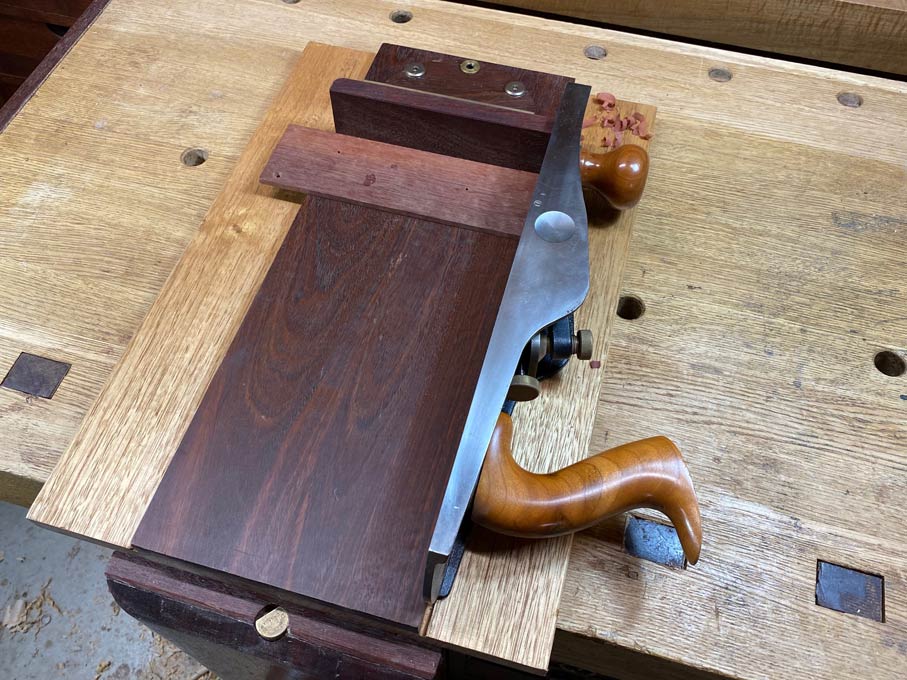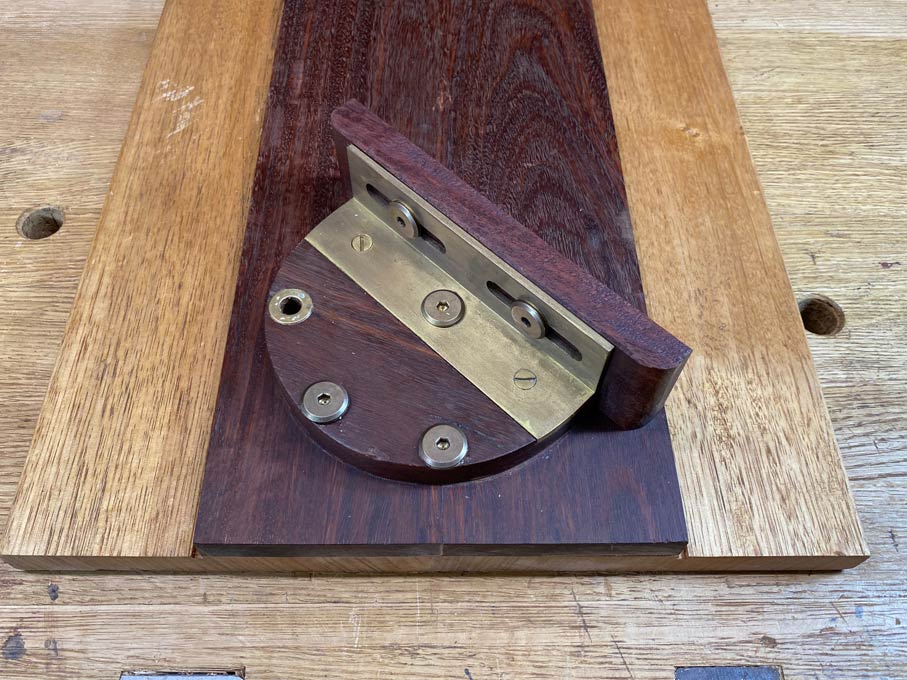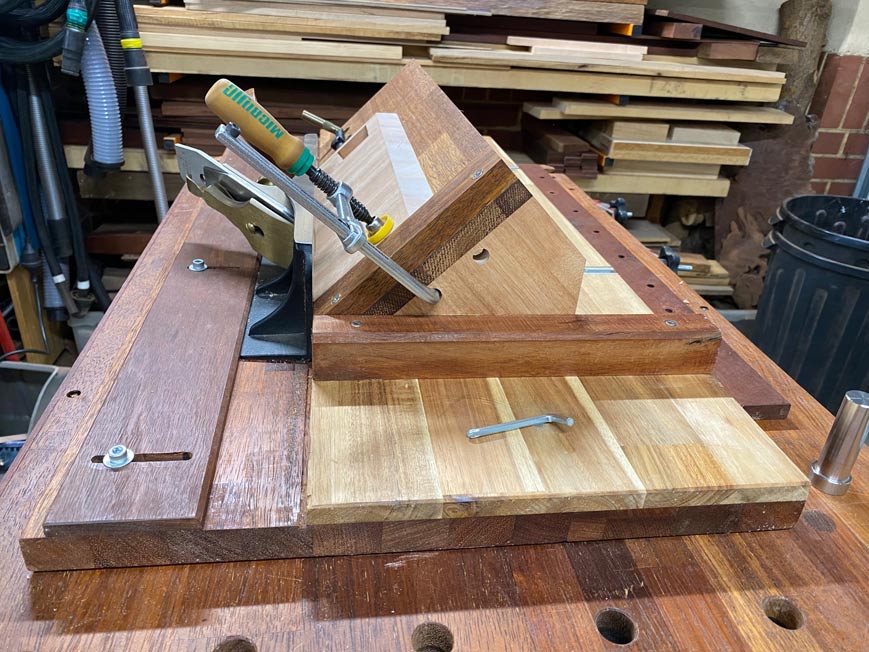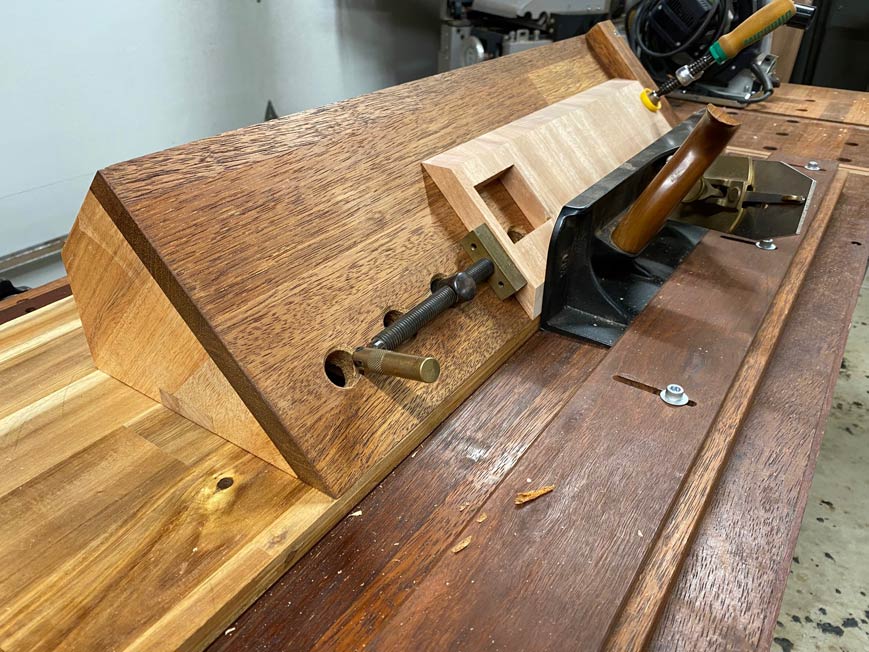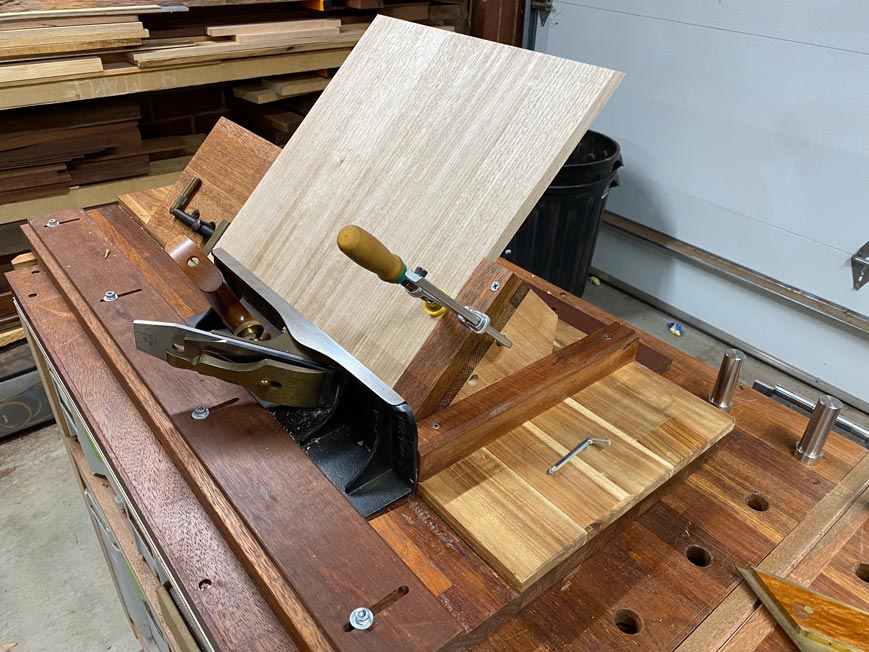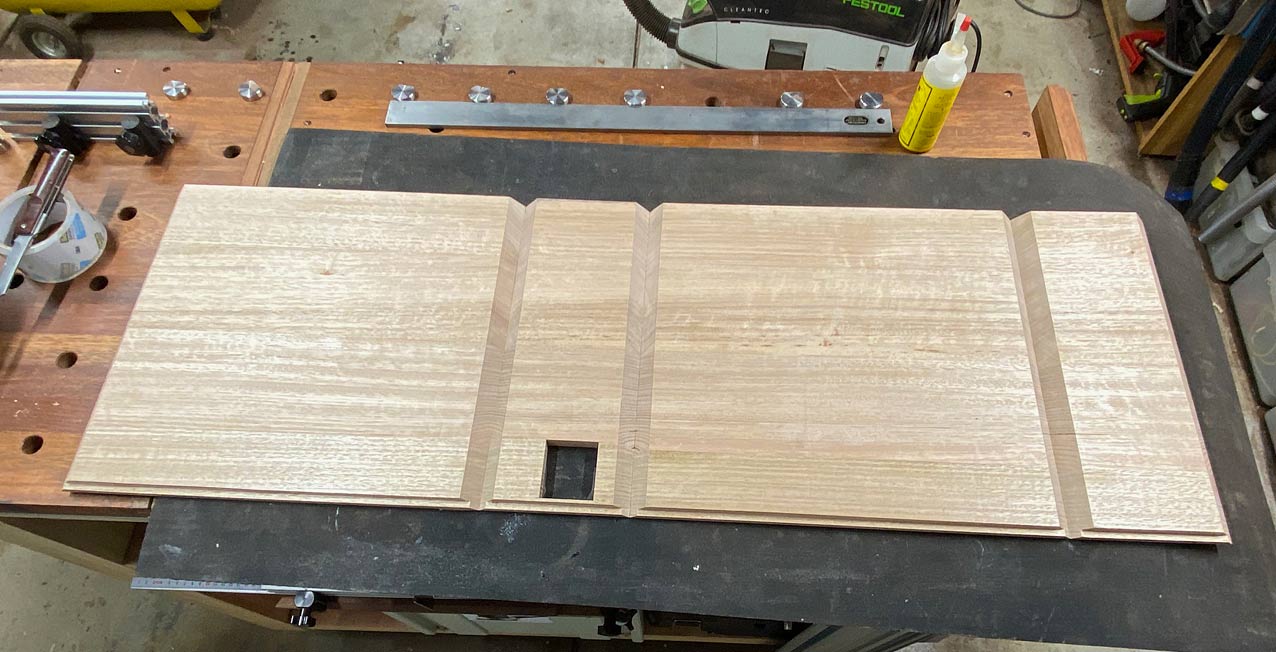Evening
If I want to put a bevel on an edge of a piece of wood, I can hold it at the required angle on my shooting board, and it planes a lovely crisp bevel very accurately and quickly on the edge of the board,
But if I want to put a mirror bevel on the other side of the same edge, I flip it over, and it tears out. Im planing against the grain.
Anybody got any clever ideas for doing this?
Thanks
Steve
If I want to put a bevel on an edge of a piece of wood, I can hold it at the required angle on my shooting board, and it planes a lovely crisp bevel very accurately and quickly on the edge of the board,
But if I want to put a mirror bevel on the other side of the same edge, I flip it over, and it tears out. Im planing against the grain.
Anybody got any clever ideas for doing this?
Thanks
Steve





